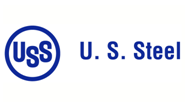Steel Mills

SDI: Positive Pricing Environment Ahead
Written by Sandy Williams
October 19, 2017
Steel Dynamics and CEO Mark Millett are expecting a tighter steel market in the fourth quarter. After surging ahead of possible Section 232 trade action, import levels have declined and, coupled with strengthening order rates and longer lead times, steel prices are expected to appreciate significantly, said Millet in remarks during the company’s quarterly conference call.
In the macro economy, exports from China are down by half due to better internal demand. Steel pricing in Asia has appreciated, closing the spread between U.S. and global pricing and setting up a positive pricing environment through 2018. “If you look at the historical spread between domestic and global pricing, we should be much higher than we are today,” said Millett.
Although the U.S. auto market is slowing, the NAFTA automotive market, especially in Mexico, is flourishing, which is good for SDI’s Columbus platform. Millet doesn’t see the NAFTA negotiations impacting SDI. The two countries are “incredibly dependent” on each other for industrial demand, he said. Steel Dynamics’ Columbus and Butler facilities can make almost any part for a car, except exposed skin, which is not a massive amount of volume for the automotive segment due to the use of alternative materials, he added.
The destruction of 500,000 to 800,000 vehicles from Hurricanes Harvey and Irma will bring consumers back to the automotive market once insurance claims have been settled. If an infrastructure bill passes, it would add considerable demand to the market, Millett said.
SDI noticed a four-week drop in orders in the hot rolled market that was similar to a pattern in September 2016. The drop is not due to seasonality, which is generally the duration of a quarter, said Millet, but rather a hesitation in the customer order rate that was very short-lived. One possible explanation is anticipation by customers of lower scrap pricing in October. The market is currently taking off again as evidenced by the recent increases in steel prices.
The graphite electrode shortage and increase in pricing has not been a problem for Steel Dynamics. As a “core customer” with contracts in place, SDI is assured of a committed supply in 2018. Needle coke supply is beginning to expand and prices have abated a little, said Millet. Even though higher raw material costs support somewhat higher costs for electrode producers, he said, they know not to put EAF mills at a cost disadvantage to integrated mills. “Prudence will prevail,” said Millet. Some electrode users may see prices two to three times higher than usual in 2018. He also noted that electrodes are less than half a percent of production cost at SDI.
Production volume at Columbus will be lower in the fourth quarter due to an outage to complete a $10 million upgrade of the hot strip mill and is estimated to reduce pretax earnings by $25 million. Butler Flat Roll Division will see the completion of a $29 million replacement and upgrade of two ladle furnaces in the fourth quarter.
The construction sector is improving, but energy has a way to go, said the company. Demand has increased for heavy off-road equipment and general heavy industrial products. Residential construction is growing, but the long products segment is still challenged by imports.
All three SDI platforms performed well, resulting in $153 million in net income and net sales of $2.4 billion, the company said.
Steel Dynamics’ steel platform performed at a 92 percent utilization rate, outstripping the 75 percent average for the industry. Total steel production was 2.53 million tons. Total steel shipments increased 2 percent sequentially to 2.5 million tons. Flat rolled shipments totaled 1.7 million tons. Hot rolled shipments totaled 853,000 tons, cold rolled 136,000 tons, and coated steel 734,000 tons. Long product shipments totaled 725,986 tons.
Steel external sales totaled $1.78 billion, compared to $1.56 billion in Q3 2016, and averaged $778 per ton.
Metals recycling benefited from improved average quarterly ferrous sales prices and steady shipments in the third quarter. Clean-up of debris from the hurricanes is expected to add to the scrap supply and help stabilize the scrap price environment. Total ferrous metals shipments were 1.2 million tons and external ferrous shipments 462,683 tons. The average ferrous scrap cost per ton melted increased $2 to $305 per ton.
Fabrication achieved record shipments of 160,482 tons for the quarter and maintains a strong order backlog. Fabrication operations purchased 330,000 tons of steel from SDI mills in 2016, contributing to SDI’s high capacity utilization rates.

Sandy Williams
Read more from Sandy WilliamsLatest in Steel Mills

CRU: Tata Steel looks to shed 1,600 jobs in the Netherlands
The company said, “The challenging demand conditions in Europe driven by geopolitical developments, trade and supply chain disruptions and escalating energy costs have affected the operating costs and financial performance."

Reports: Federal funding for Cliffs’ project could be slashed
Elon Musk's DOGE is determining which Department of Energy grants to advance and which ones to terminate, according to several media outlets

Trump still against selling USS to Japanese firm: Report
Despite ordering a new review of Nippon Steel’s bid for U.S. Steel, President Trump said he is still against selling USS to a Japanese company, according to media reports.

Algoma looks to sell more steel in Canada in wake of Trump’s tariffs
The Canadian steelmaker said its absorbing higher tariffs as it moves forward.

Ancora abandons plan to take over leadership of USS
Investment firm Ancora Holdings Group has halted its play for U.S. Steel's board, citing Nippon Steel’s proposed bid for USS “gaining momentum.”
